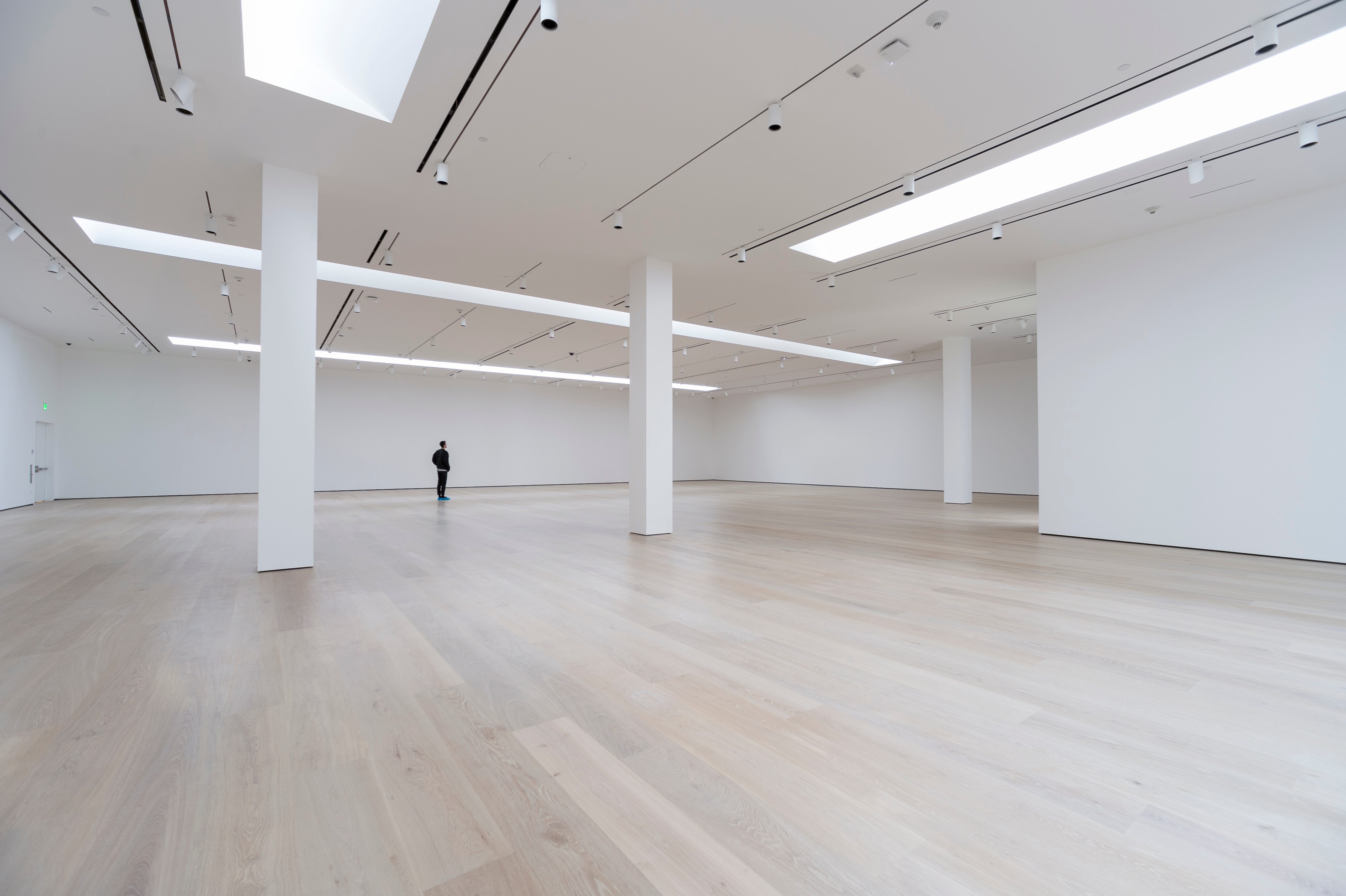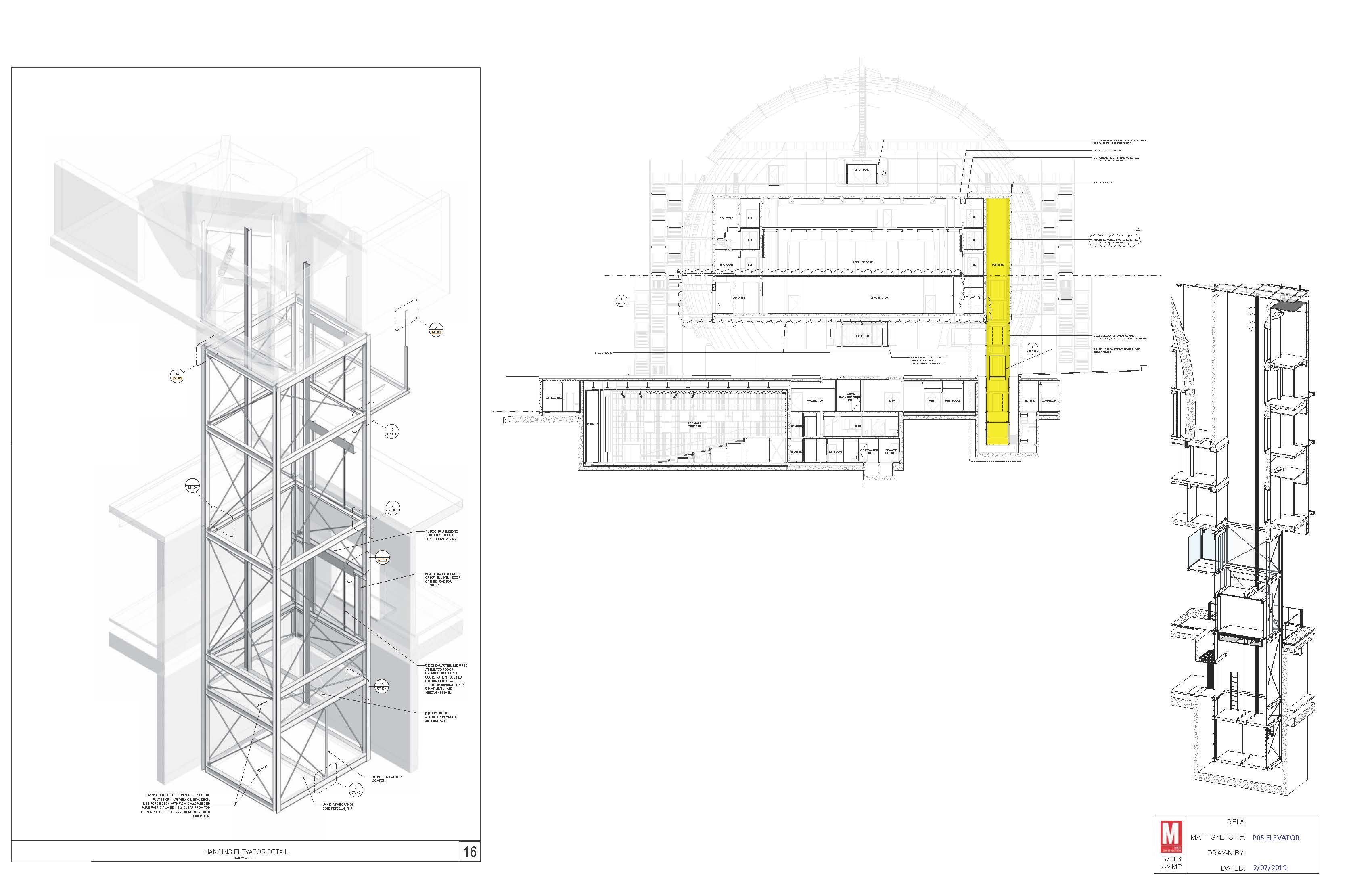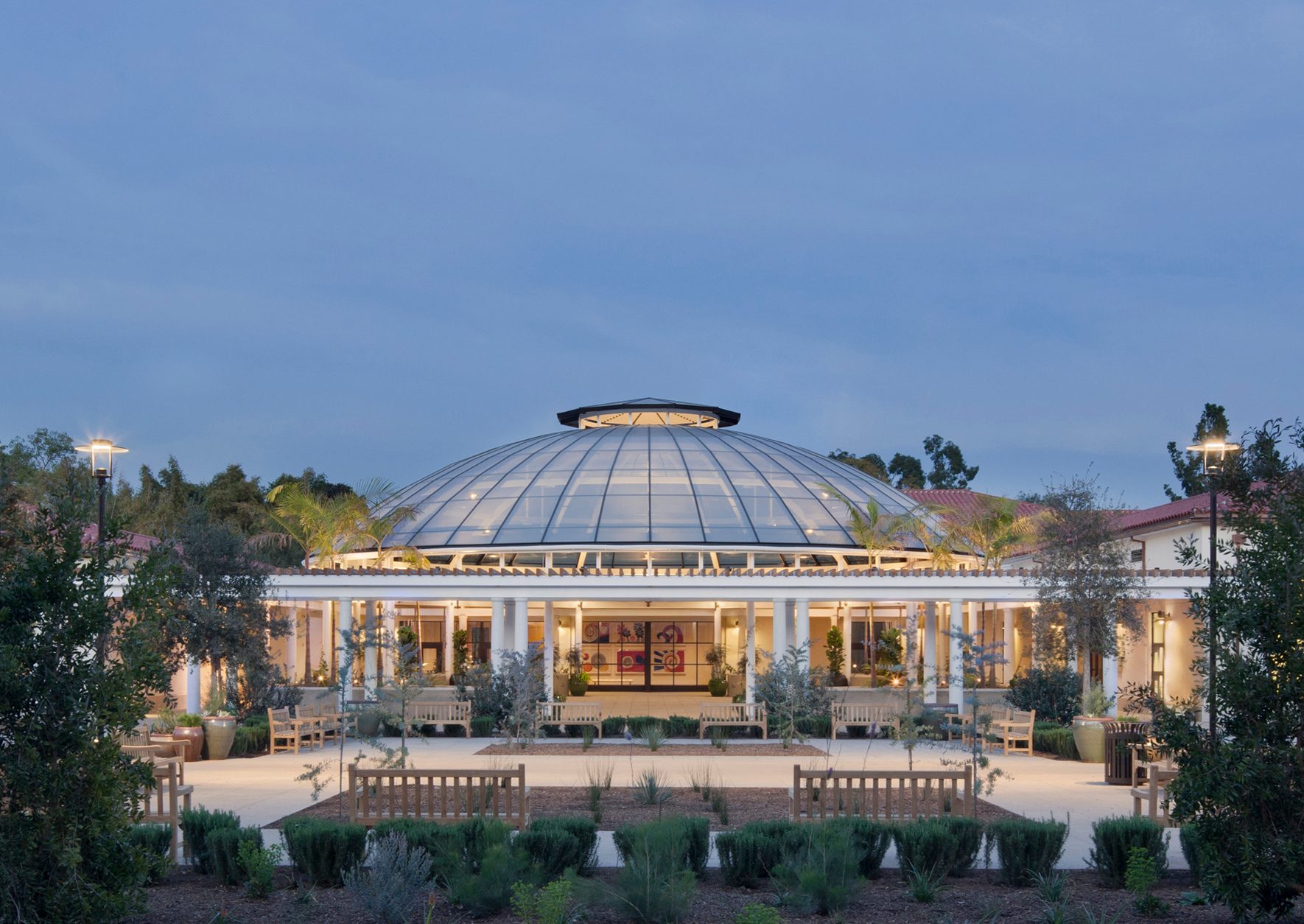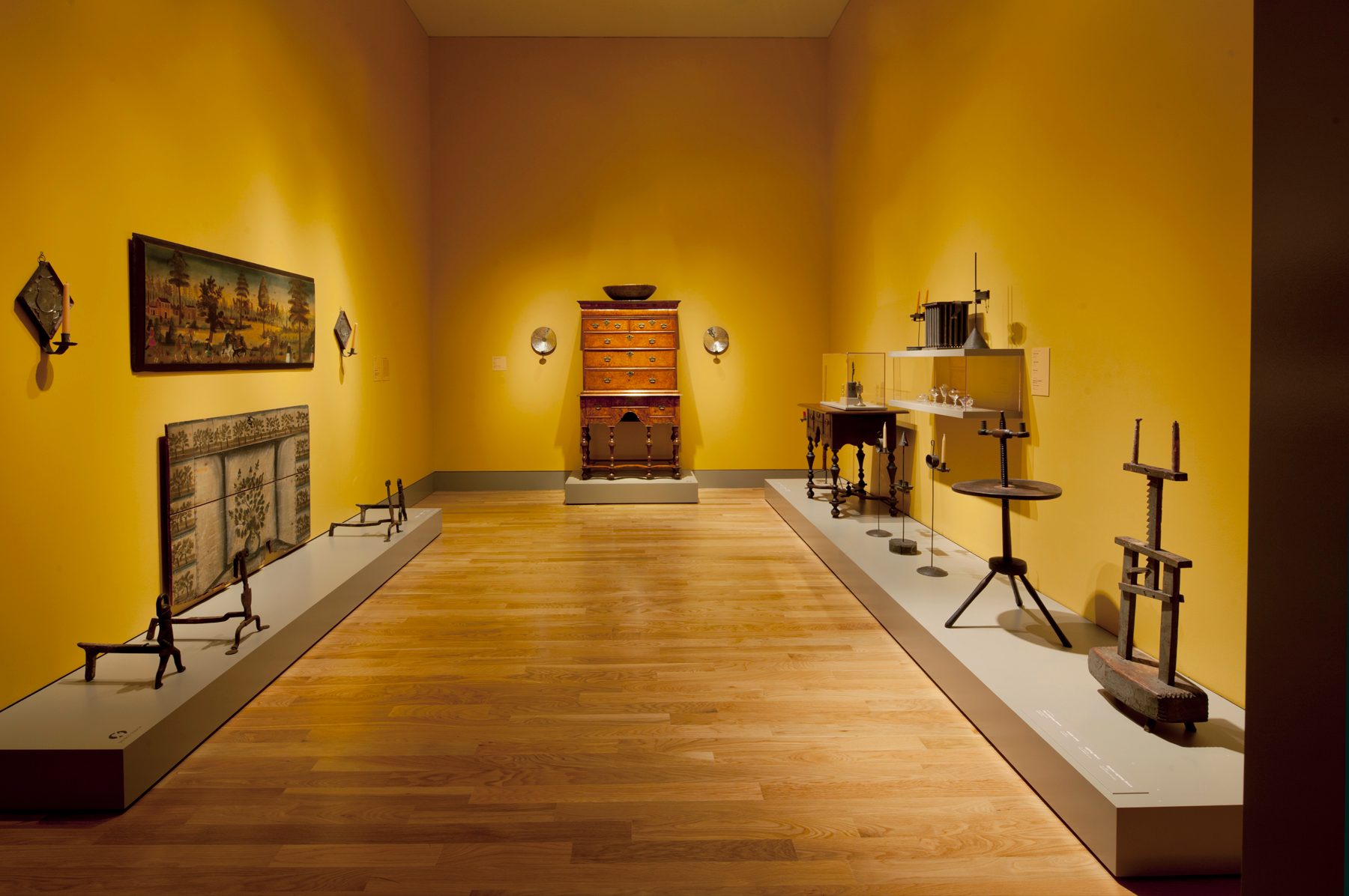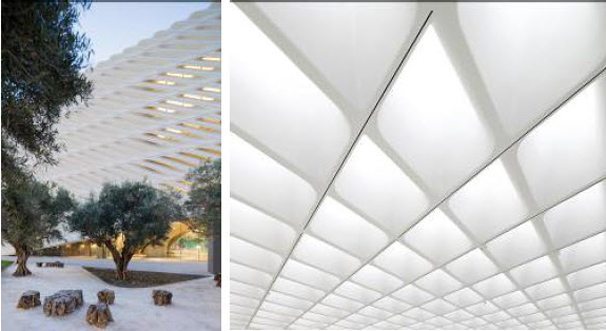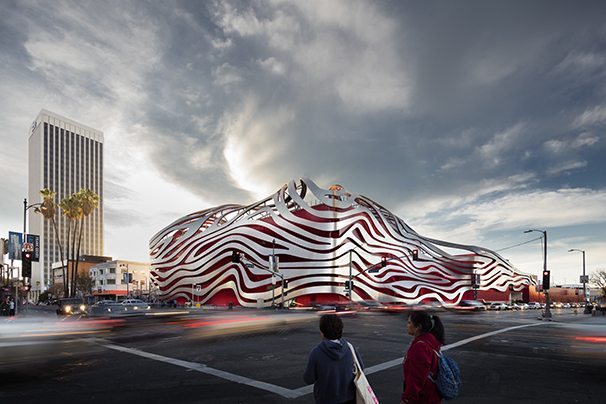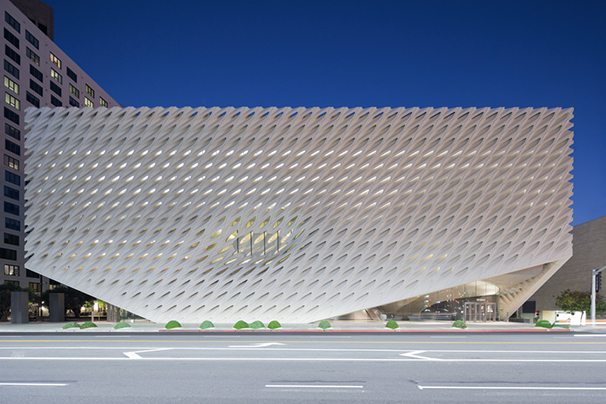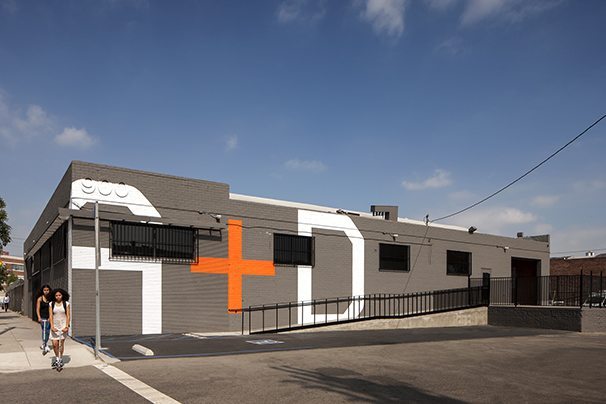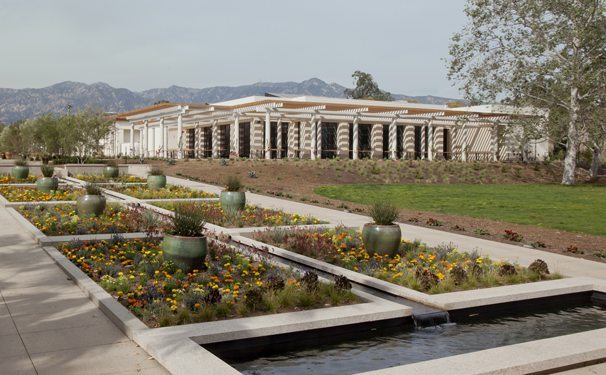
All photos by Tim Street-Porter
Location
San Marino, CA
Owner
The Huntington Library, Art Collection, and Botanical Gardens
Architect
Architectural Resources Group
Landscape Architect
The Office of Cheryl Barton
Project Size
95,761 SF
ViewSteven S. Koblik Education and Visitor Center at The Huntington
If you had popped by the Huntington Library, Art Collections, and Botanical Gardens recently you couldn’t have helped but notice the new Steven S. Koblik Education and Visitor Center: 110,000 sf of educational facilities, visitor amenities, and basement storage, within 6.2 acres of gardens. Architectural Resources Group (ARG) led the design team, partnering with landscape architects Office of Cheryl Barton (O|CB) to ensure buildings and setting formed an integrated ensemble congruent with the original estate. MATT Construction was privileged to serve as General Contractor. The completed project is beautiful, practical and sustainable: building envelope, lighting, and HVAC systems exceed California’s Title 24 minimum requirements by more than 17%; plumbing systems and fixtures exceed CAL Green requirements by more than 30%. MATT recycled 75% of construction debris.
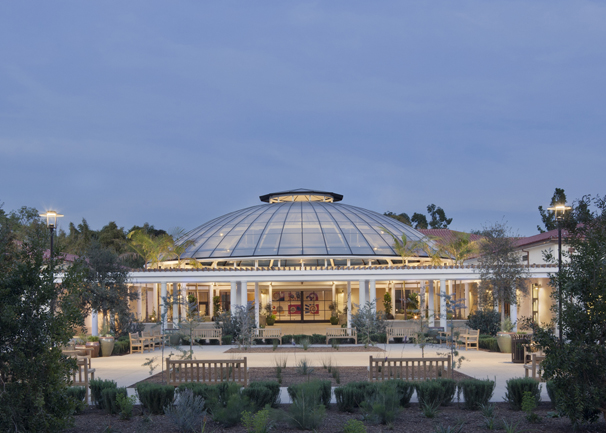
From its groundbreaking in April 2013, the site became a hive of activity, involving up to 160 workers at a time. Along with maintaining safety, scheduling and logistics to accommodate The Huntington’s operations, MATT’s challenges included protecting garden soil from compaction by “harvesting” 11,000 cu yds of it, trucking it to temporary “storage” clear across the property, and, of course, back again.
Almost exactly two years later, there is a sense of change even as one leaves the parking lot: it’s a much shorter walk to the entrance. A walkway lined with pepper trees leads to an entry plaza; there, one crosses through oblong beds of seasonal flowers and, at the threshold, under the welcome shade of a façade-wide network of grapevine-swagged trellises that tie the buildings to the land, unifying the entire exterior.
For years, the Huntington’s Trustees had wanted a “new front door,” a portal that would express the significance of the Huntington’s art collection, the scholarly importance of its library holdings, the breadth of its botanical collections, the beauty of its gardens, its role as a teaching and learning institution… in short, its status as an international-caliber cultural and educational treasure. The new Education and Visitor Center (EVC) had to complement the estate’s Beaux-Arts architecture and landscape, yet provide practical upgrades: modern, well-equipped, multipurpose meeting spaces, lecture halls, shopping and dining opportunities. Yet, it must not be stuffy; it must affirm the warm and informal atmosphere that has made the Huntington a Mecca for casual tourists and scholars alike.
ARG knew accommodating ~110,000 sf of programming and storage in one large, “architecturally iconic” building would overwhelm the historic estate in scale, style and visual primacy.
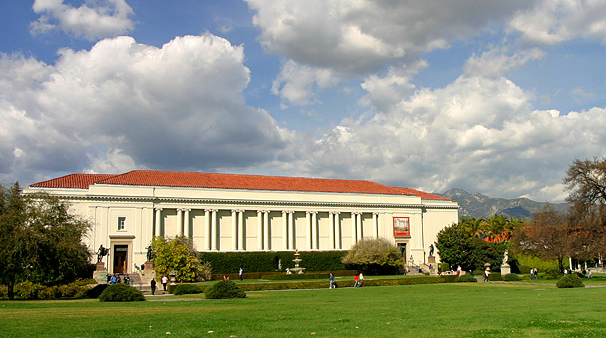
The solution: distribute the various functions–arrival and ticketing areas, store, auditorium, classrooms, event spaces, dining, archives–into an ensemble of related but separate buildings similar in scale to the existing historic outbuildings and integral to the landscape. With understated architecture and The Huntington’s simple color palette, the new buildings would be visually and physically connected to each other, to their respective outdoor spaces, and to the large central garden via loggias, trellises and pathways that would encourage and facilitate movement throughout the space and to the other parts of the estate.
At the new entry one encounters the first three buildings whose connecting loggia forms a broad “U.” Plentiful ticket windows are arranged along the U’s western leg, flanked on one end by a staffed information office, and on the other by large restrooms, ATM and day-use lockers that make it easy to prepare for adventure. A gourmet-style coffee shop and a membership office occupy the base of the U, while the eastern leg is consumed by the huge new store… more on that later.
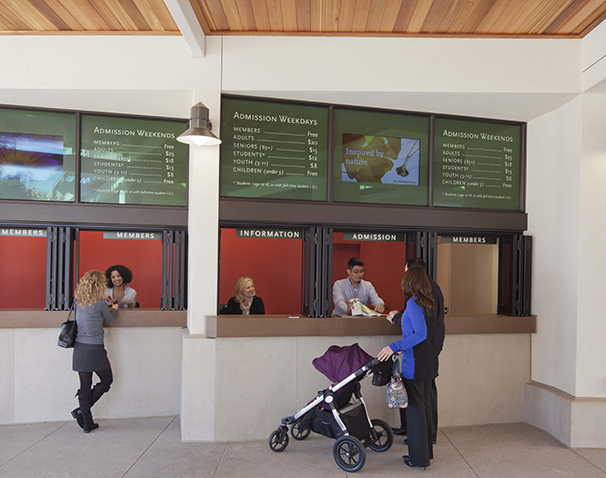
At the center of the U is a courtyard shaded by mature Podocarpus trees. The view from here reveals the full extent of the transformation: An entire line of new structures, each built into its own garden space, has sprung up opposite a parallel line of pre-existing buildings, forming a roughly North/South axis; an East/West axis mid-way up links the Munger Research Center to a new circular-domed conservatory.
Straddling these axes is the Huntington’s first California Garden, a broad open landscape of formal geometric shapes interspersed with seating areas, in size accommodating couples to sizeable groups.

It is an enormous space, a landscape in the Huntington’s customary grand scale that visitors have enjoyed for decades in the property’s many thematic gardens. But there’s a twist: the new gardens feature plants largely (perhaps surprisingly) overlooked by the Huntingtons: California natives, which, even where they are planted out in orderly lines, angles, arcs and circles, evoke an entirely new, more relaxed look to those familiar classic bedding plans. In fact, this is the first California Garden to be installed at the Huntington. O|CB specifically designed The Huntington’s new sustainable gardens to reflect both the natural history of the region and the history of the property, including its agricultural past and its decidedly European landscape traditions: plants native to the San Gabriel Valley, productive crops like citrus and olive trees, and manicured hedges and more formal plantings that showcase the property’s role as an elegant Gilded-Age estate.
The new buildings are equally arresting: distinctly contemporary yet classically proportioned, straightforward volumes sheathed in simple but carefully detailed materials consistent with the original structures: stucco, cast stone, copper, clay tile. Instead of modernist expanses of glass, articulated window openings bathe interiors in abundant natural light and carefully frame views that visually connect to the gardens. Inside, white oak paneling emulates the estate’s historic buildings.
In the first building along the axis, the Banta Education Center, an intimate courtyard is encompassed by four new classrooms equipped to provide K-12 students, educators, docents, and life-long learners with hands-on “common core” learning experiences in botany, science, history, literature, and art.
Next-door, directly opposite the Munger Research Center, the circular, glass-domed Rose Hills Foundation Garden Court provides airy filtered shade perfect for sensitive plants, special events, or relaxing visitors.
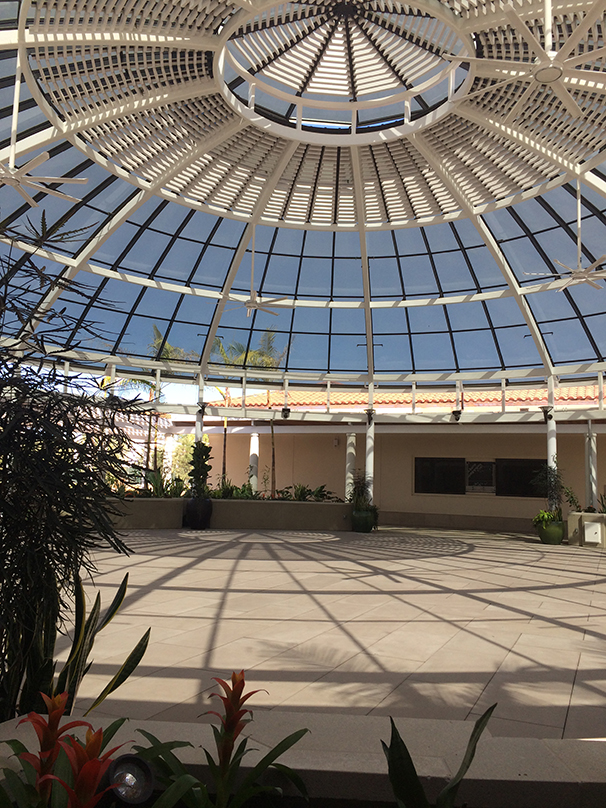
Behind the conservatory is the Huntington’s new venue for academic conferences, chamber music performances, and presentations. The new 400-seat auditorium features raked seating, exceptional acoustics and state-of-the-art audiovisual capabilities. A separate multipurpose room accommodates 300 to 400 people and can be divided to allow a pair of smaller events to take place at the same time.
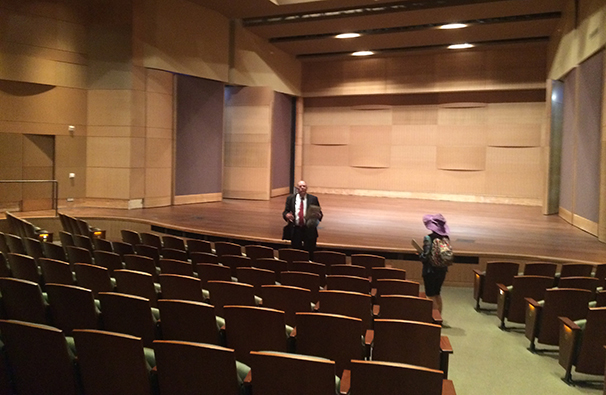
Immediately beyond the domed conservatory is Haaga Hall, a spectacular 5,000 sf multipurpose room where flexible floorplan, lighting and audiovisual capabilities easily adapt to accommodate diverse events in quick succession.
Sharing the southernmost new building are The Boardroom, an elegant meeting space richly finished with white oak wainscoting, an entire wall lined with windows; and the bright new Café where guests may enjoy snacks or meals along with beautiful garden views.
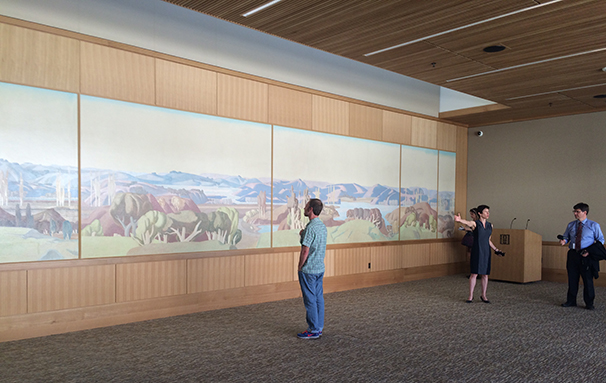
Here at the EVC’s southern extreme, the dominant axis terminates in the vibrant color of the Celebration Garden, where the new gardens dovetail with the formal historic landscape of the original estate.
On our way back to the Huntington Store, one “crosses the axis” to the old store, now the Mapel Orientation Gallery. In this open-plan, 2,200 sf space, interactive, dynamic and static displays acquaint visitors with the history of the estate and its founding family, and the many things to see and do.
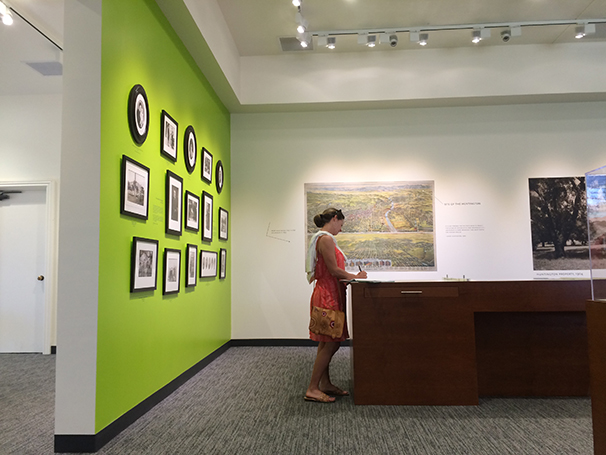
The neighboring Munger Research Center is largely unchanged…except for a 200-ft long tunnel connecting to 42,000 sf of new underground storage space in the EVC basement, a crucial addition providing space and access for The Huntington’s enormous and growing collections of sensitive art, artifacts and original manuscripts.
Finally: The Huntington Store. With 5,000 sf of retail space, it’s twice the size of its predecessor; a soaring ceiling that incorporates a huge skylight on its northern exposure, makes it seem even larger. The store comprises a long, airy central space surrounded by eight interconnected rooms, each showcasing items varied in type and price, but all relating to a Huntington-centric theme. Naturally, one alcove covers gardening and another, art. Gifts in two alcoves pay homage to The Huntington’s Japanese and Chinese Gardens, while those in a third reference The Huntington’s beloved Tea Room. Past and present exhibits on history, science, cartography and literature inform the offerings in one nook, while a particularly ambitious showroom highlights the Pasadena-born Arts and Crafts movement with furniture hand- made by Southern California craftsmen,. Most imaginative is the large children’s alcove, where a floor-to-ceiling wooden tree displays stuffed critters in its branches, and books in its roots, which also incorporate child-sized seats. Luxury gifts—fine jewelry, textiles, artworks—are tucked in an open but hidden space behind the service counters.
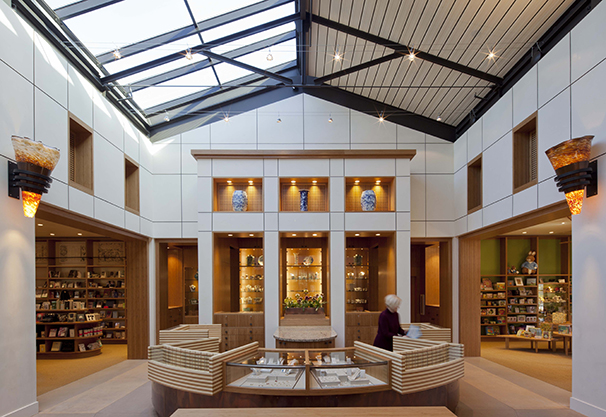
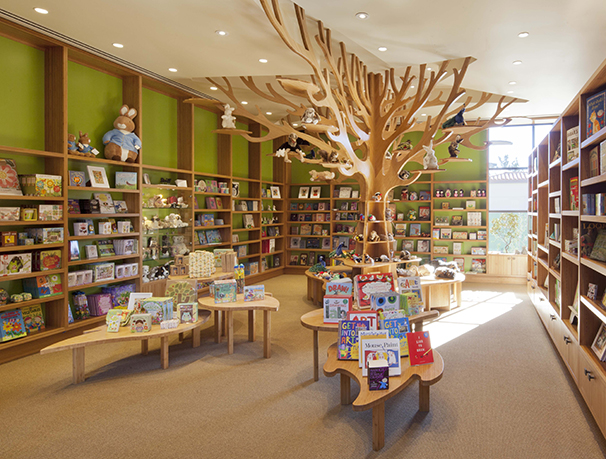
The store’s interior finishes and furnishings, all by Miroglio Architecture and Design, are as delectable as anything sold there. Multi-level round and graduated rectangular craftsman-style tables display seasonal wares and objets d’art. Walls feature the Huntington’s signature white oak paneling, accentuated by magnificent art glass sconces.
As our tour now draws to a close, we might take to heart the words of Heather Haaga, whose devotion to the Huntington stems from the family’s desire to help institutions move “from good to great, great to excellent, excellent to eminent.” It is an aspiration that all of us at MATT can relate to in our work on such a community treasure.


